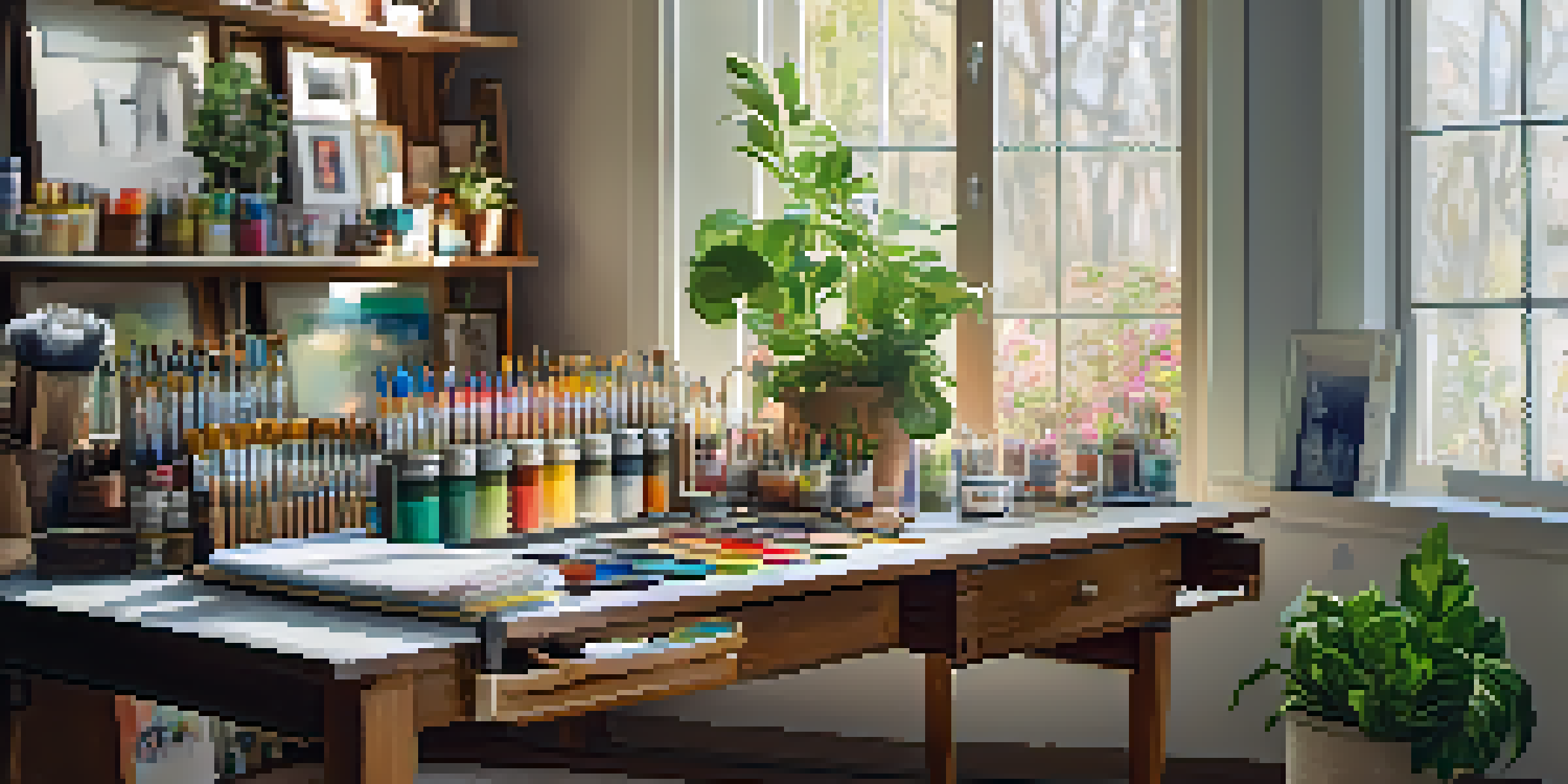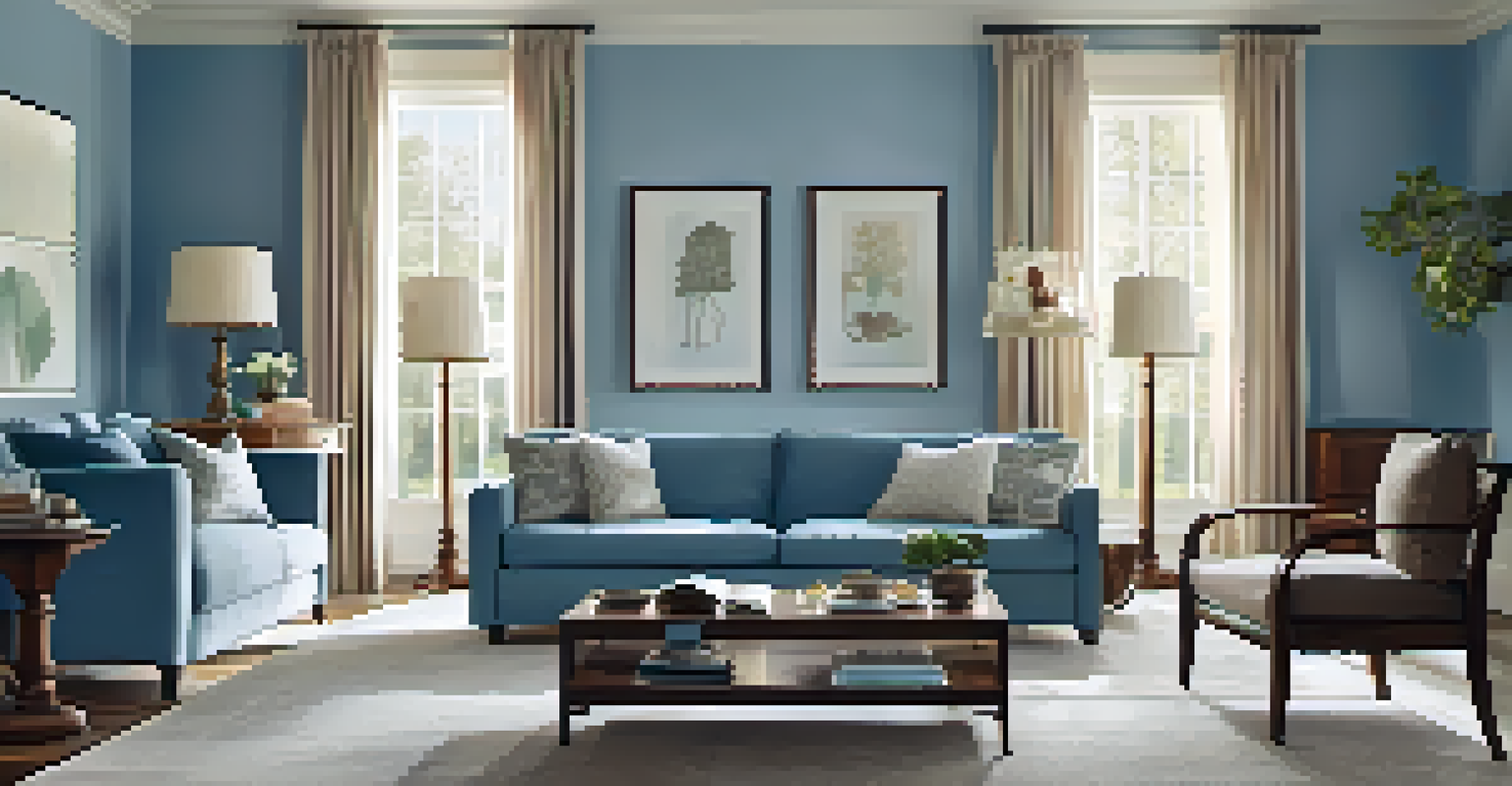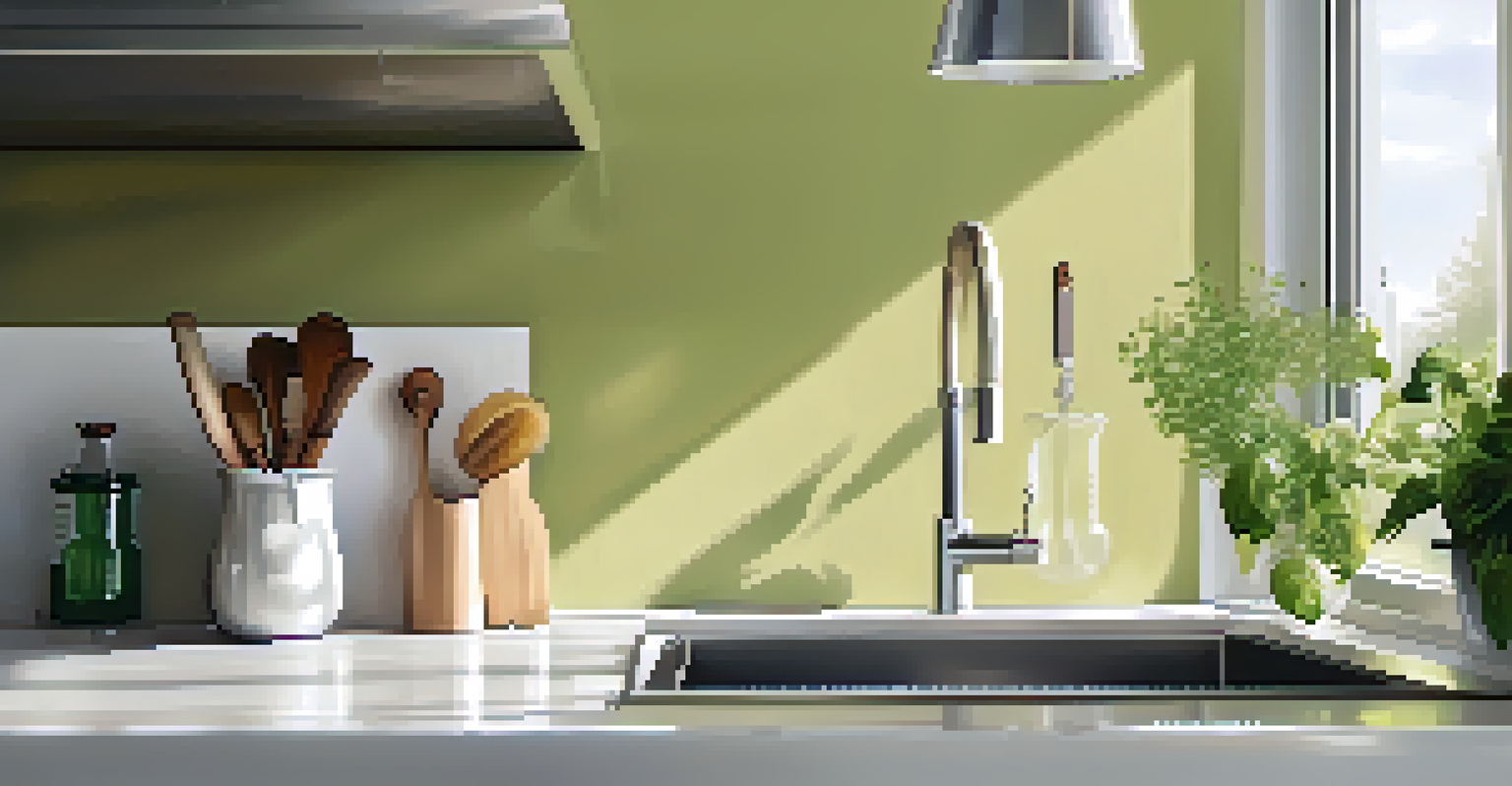How to Choose the Right Paint for Your Renovation Project

Understanding Different Types of Paint for Your Project
When it comes to paint, knowing your options is key. The most common types are water-based (latex) and oil-based paints. Water-based paints are easier to clean and dry quickly, making them great for interior walls, while oil-based paints offer a smooth finish and durability, perfect for trim and cabinetry.
Color is the keyboard, the eyes are the harmonies, the soul is the piano with many strings.
Additionally, consider specialty paints like chalkboard or magnetic paint if you’re looking to add unique features to your space. Each type serves a specific purpose, so it’s crucial to match the paint type with your project’s needs.
Don’t forget about finishes! From matte to glossy, the finish can dramatically affect the look and feel of your space. A satin finish may be perfect for a cozy living room, while a high-gloss finish works wonders in kitchens and bathrooms.
Determining the Right Color Scheme for Your Space
Choosing a color can feel overwhelming, but it doesn’t have to be! Start by considering the mood you want to create. Warm colors like reds and oranges can energize a room, while cool colors like blues and greens promote relaxation.

Look at the existing elements in your space, such as furniture and decor. Pulling colors from these items can create a harmonious look that feels intentional and well-thought-out. For instance, if you have a vibrant rug, you might select a more muted wall color to balance the space.
Choose the Right Paint Type
Selecting the appropriate type of paint, such as water-based or oil-based, is essential for achieving the desired finish and durability for your project.
Don’t shy away from experimenting! Sample paint swatches on your walls and observe how they change throughout the day with different lighting. This will help you visualize how the final color will feel in your home.
Assessing Your Space’s Lighting and Size
Lighting plays a crucial role in how paint colors appear in your space. Natural light can brighten up colors and reveal their true shades, while artificial light can alter them significantly. Consider how much natural light your room receives throughout the day.
The best way to predict the future is to create it.
Additionally, the size of your space can influence your color choices. Lighter colors can make a small room feel larger and more open, whereas darker tones can create a more intimate atmosphere. Think about how you want the space to feel when choosing your palette.
To truly understand how your chosen color will look, it’s beneficial to test it on the walls. This way, you can see how it interacts with your lighting and the overall size of your room, allowing for adjustments if necessary.
Considering the Room’s Purpose and Function
The function of a room significantly impacts the type of paint you should choose. High-traffic areas like hallways or children's rooms may benefit from durable, washable paints that can withstand wear and tear.
For spaces like bathrooms and kitchens, moisture-resistant paints are essential to prevent mold and mildew. These paints are specially formulated to endure humidity and are easier to clean, ensuring your walls stay fresh longer.
Consider Lighting and Size
Understanding how lighting and the size of your space affect paint color can help you make more informed decisions for a cohesive look.
Think about how you use the space. If it’s a cozy reading nook, softer colors may create a calming environment, while a vibrant home office might inspire creativity and productivity. Tailoring your paint selection to the room’s purpose can enhance your overall experience.
The Importance of Quality Paint Products
Investing in high-quality paint can save you time and money in the long run. Cheaper paints might seem appealing, but they often require multiple coats and may not hold up over time, leading to more frequent touch-ups.
Quality paints usually offer better coverage, durability, and color retention, ensuring your hard work pays off. Brands that are well-reviewed or recommended by professionals often have a proven track record for quality.
When shopping, look for paints that are low in volatile organic compounds (VOCs) for a healthier indoor environment. Choosing eco-friendly options ensures you’re protecting not only your home but also the planet.
Preparing Your Space for Painting Success
Preparation is key to a successful paint job! Start by clearing the room of furniture and covering floors with drop cloths to protect them from spills. It’s also important to clean the walls, as dust and grime can affect paint adhesion.
Don’t forget to patch any holes and sand rough spots for a smooth finish. A little extra effort in preparation can go a long way in achieving a professional look.
Invest in Quality Paint
Using high-quality paint can enhance durability and coverage, ultimately saving you time and money on touch-ups in the future.
Finally, use painter's tape to mask off edges and trim. This will help you achieve clean lines and prevent paint from bleeding onto surfaces you want to keep pristine.
When to Seek Professional Help for Your Painting Project
While DIY painting can be a rewarding endeavor, there are times when it’s wise to call in the professionals. If your project involves high ceilings, intricate designs, or extensive prep work, hiring experts can save you time and stress.
Professional painters not only have the experience but also the right equipment to tackle challenging tasks. They can provide a smooth finish and ensure the job is done safely and efficiently.

Additionally, if you’re unsure about color choices or paint types, professionals can offer valuable advice tailored to your specific needs. Their expertise can help you achieve the look you desire without the guesswork.